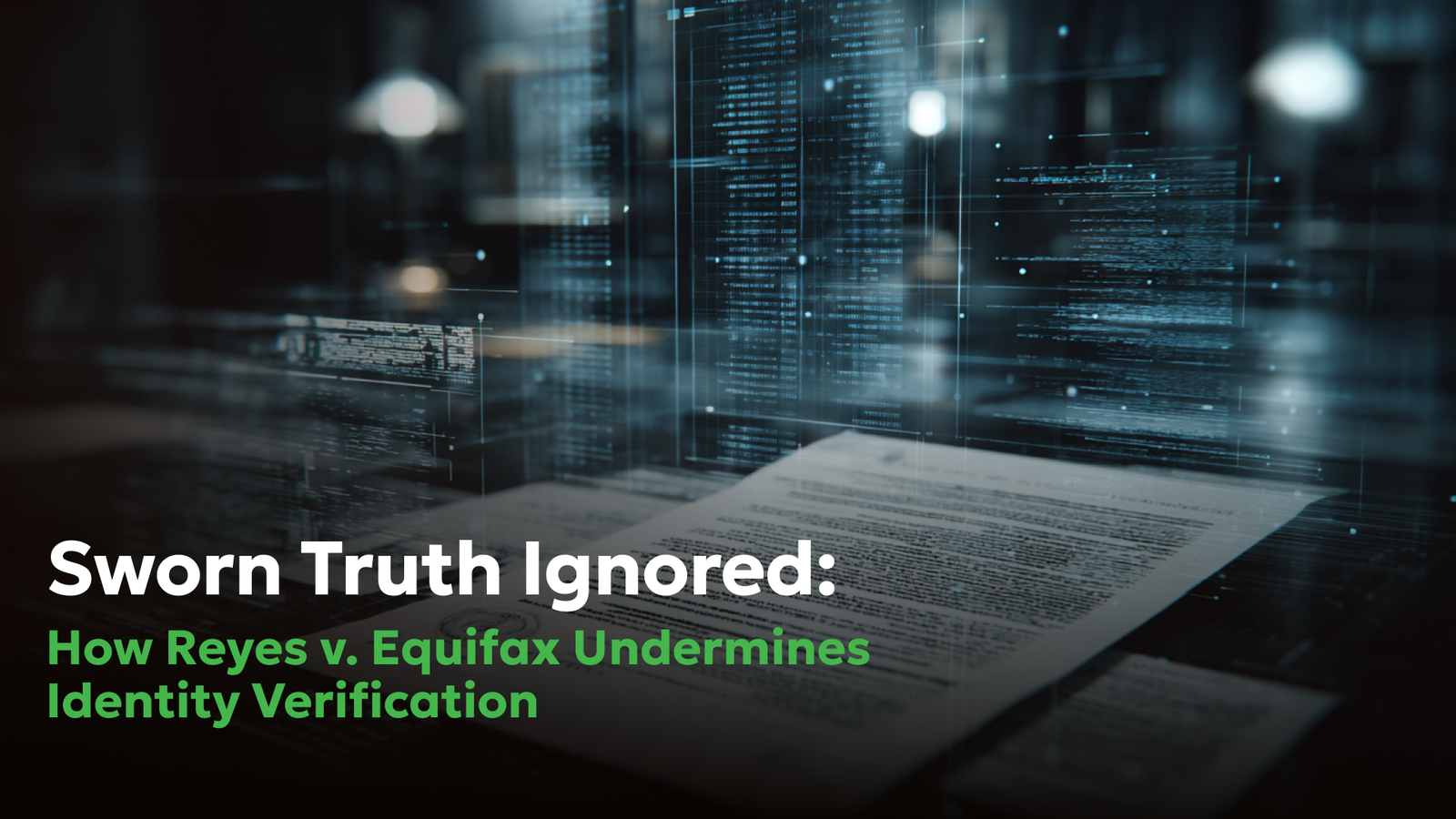Have You Ever Experienced an Unauthorized Withdrawal From a Bank Account?
- Blog
- Credit Report Identity Theft
Have You Ever Experienced an Unauthorized Withdrawal From a Bank Account?

Time’s ticking on unauthorized withdrawals! Learn how to catch fraud fast and protect your money before it’s too late.
Unauthorized withdrawals can drain your account fast. Learn how to spot fraud, dispute charges, secure your accounts, and protect your money. Contact Consumer Attorneys if the bank isn't cooperating.
An unauthorized withdrawal from your bank account is like seeing a mouse in your basement—one mouse is scary enough and sufficiently annoying, but then you have to wonder if there are any other mice that you’re not seeing. The possibility of that reality is terrifying!
Unauthorized withdrawals from your bank account are not just a frustrating inconvenience—they are often a sign of something much more serious, like identity theft. Seeing money leave your account without your approval is alarming, whether it’s a mystery charge, a large transfer, or even a check you didn’t write. In today’s digital world, it’s easier than ever for fraudsters to gain access to your financial accounts, and the consequences can be devastating if not handled quickly.
The identity theft lawyers at Consumer Attorneys explain how to identify, address, and prevent unauthorized withdrawals from your bank account. We’ll also discuss your legal rights, including what to do if a company takes money from your account without permission.
What Is an Unauthorized Withdrawal?
An unauthorized withdrawal is any transaction from your bank account that you didn’t approve. This can include fraudulent charges, transfers, or checks you never wrote. These withdrawals can happen for various reasons—most commonly due to identity theft, but they can also be caused by errors at the bank or by companies taking money from your account without your consent.
No matter how the unauthorized withdrawal occurs, acting quickly is essential. The faster you catch the issue, the more likely you are to recover the funds and stop further fraud from happening.
How Do Unauthorized Withdrawals Happen?
There are many ways unauthorized withdrawals can occur, ranging from high-tech scams to more traditional thefts like stolen wallets or checkbooks. Some standard methods include:
- Identity theft schemes. Fraudsters often pose as trusted companies like Amazon or Apple to scare you into transferring money. They may call or email you, pretending there’s suspicious activity on your account, and trick you into giving them access to your financial information.
- Online banking hacks. Malware and phishing scams can give cybercriminals access to your online banking account, allowing them to drain your funds or transfer money to their own accounts.
- Stolen personal information. If someone steals your wallet, phone, or even just your bank card, they can access your financial accounts and make unauthorized withdrawals.
No matter the method, the end result is the same—money disappears from your account, and it’s your responsibility to spot and report it before more damage is done.
How to Identify Unauthorized Charges on Your Account
The first step in protecting your finances is spotting unauthorized charges quickly. Regularly reviewing your bank and credit card statements can help you catch any suspicious activity before it spirals out of control. Here’s what to look for:
| What to Look For | Why It’s a Red Flag | What You Should Do |
|---|---|---|
| Small test charges | Thieves test if the account works before larger withdrawals. | Dispute the charge with your bank immediately and request a new card. |
| Charges from unfamiliar merchants | Fraudulent transactions may use vague business names to hide activity. | Investigate by contacting the merchant or your bank to confirm the charge. |
| Recurring payments you didn’t authorize | Cybercriminals may set up automatic payments or transfers. | Cancel the recurring payment, report the fraud, and reset account passwords. |
| Suspicious ATM or check withdrawals | Unrecognized ATM or check activity is a clear sign of unauthorized use. | Contact your bank, report the issue, and request an investigation. |
| Duplicate transactions | Scammers sometimes process the same transaction multiple times. | Dispute the extra charge, and ask your bank to block the merchant if needed. |
| Charges in foreign currencies | Unfamiliar international transactions could indicate overseas fraud. | Call your bank to dispute and request a new card; consider additional security |
| Unusual spending patterns | A spike in spending in new areas can indicate account compromise. | Monitor your account for further fraud, report it to your bank, and freeze the card. |
Setting up account alerts can also help you spot unauthorized activity. Many banks allow you to receive notifications for every transaction, helping you catch fraud as soon as it happens.
Can a Company Take Money Out of Your Bank Account Without Permission?
It’s a question many consumers ask: Can a company take money out of your bank account without permission? The answer, generally, is no. A company should not be able to withdraw funds from your account without your express consent, either through an agreement or direct authorization.
However, mistakes and fraud do happen. Sometimes, companies will charge for services you didn’t sign up for, or a billing error will cause unauthorized withdrawals. In other cases, predatory companies might enroll you in automatic payments without your knowledge.
If this happens, contact your bank immediately and dispute the charge. You may also want to contact a consumer protection attorney to explore whether the company violated the law by taking funds without permission.
What to Do If Someone Withdraws Money from Your Bank Account
If you notice unauthorized withdrawals or charges, it’s critical to act fast. Follow these steps to limit the damage and recover your money:
Step 1: Notify Your Bank Immediately
When you spot an unauthorized charge, call your bank or financial institution. Most banks have 24/7 fraud hotlines for this reason. The sooner you report the fraud, the quicker the investigation will start—and the more likely it is that your liability will be limited. Time is critical here; most banks have policies that protect consumers, but those protections may lessen the longer you wait to report the fraud.
Step 2: Review Your Transactions Thoroughly - But Not So Thoroughly That You Miss the Deadline
Once you’ve reported the unauthorized withdrawals, take a close look at your account. Identify any other suspicious activity or fraudulent charges to help your bank build a case. But don’t delay—there are legal deadlines you must follow. Under the Electronic Fund Transfer Act (EFTA), you typically have 60 days from the date your statement is issued to dispute unauthorized transactions. If you miss this window, the bank may not be required to refund your money, and you could be responsible for the charges. So, act quickly, gather all the details, and file your dispute with the bank as soon as possible.
Step 3: Secure Your Other Accounts
Next, take steps to lock down your other financial accounts. This includes changing your bank login information, updating your PIN, and resetting any security questions. If you suspect identity theft is behind the unauthorized withdrawals, freezing your credit is a wise move. You can request a credit freeze from any of the three major credit reporting agencies—Experian, Equifax, or TransUnion. This helps prevent criminals from opening new accounts in your name while you sort out the fraud.
Step 4: Contact Consumer Attorneys
If you're dealing with unauthorized withdrawals, especially if the bank is dragging its feet or refusing to help, don’t hesitate to get professional support. A consumer protection attorney can guide you through the legal process, help you enforce your rights under the EFTA, and ensure you recover your hard-earned money. With time-sensitive deadlines and complicated rules, having a lawyer on your side can make a big difference in securing your funds and protecting your financial future.
What If the Bank Won’t Refund the Money?
Most banks will work with you to recover unauthorized withdrawals, but not all cases are straightforward. If the bank refuses to refund the stolen money, or if they claim you’re responsible for the charges, don’t give up. You may have legal recourse.
Under laws like the Electronic Fund Transfer Act (EFTA), banks must investigate fraudulent transactions and, in many cases, refund the stolen money. If your bank isn’t cooperating, consider contacting a consumer protection attorney to help you understand your rights and fight for your funds.
How to Prevent Unauthorized Withdrawals
While there’s no surefire way to prevent every unauthorized withdrawal, there are steps you can take to reduce your risk:
- Be cautious of phishing scams. If you receive an unexpected email or phone call asking for account information, don’t respond. Instead, contact the company directly through a trusted phone number or website to verify the request.
- Monitor your accounts regularly. Make it a habit to check your bank statements and transaction history often. The earlier you spot unauthorized withdrawals, the faster you can act to stop further damage.
- Use strong passwords. Secure your online banking accounts with strong, unique passwords, and enable two-factor authentication whenever possible.
- Freeze your credit. If you suspect identity theft, place a credit freeze on your account with the major credit bureaus. This will prevent anyone from opening new lines of credit in your name.
- Shred sensitive documents. Don’t leave personal information lying around. Shred old bank statements, credit card offers, and any other documents that contain sensitive details.
What If You’ve Already Been a Victim of Fraud?
If you’ve already experienced unauthorized withdrawals, taking immediate action is essential. Start by following the above steps to report the fraud, secure your accounts, and recover your funds. But beyond that, it’s important to stay vigilant. Fraudsters may continue to target your accounts, and it may take time to fully secure your financial identity.
Contact Us for Help with Unauthorized Withdrawals
Dealing with unauthorized withdrawals is stressful, but you don’t have to handle it alone. If you’re struggling to recover your funds, facing pushback from your bank, or dealing with a company that took money out of your account without permission, we can help.
Frequently Asked Questions
Whether or not a bank will refund scammed money depends on the circumstances of the unauthorized withdrawal and whether you report the fraud promptly. In addition to laws like the Electronic Funds Transfer Act (EFTA), many banks have policies to protect customers from unauthorized transactions, including those resulting from scams. The level of a bank’s protection will vary based on the type of account, the nature of the transaction, and the timeliness of the fraud report. Regularly reviewing your account history is important so you can identify unauthorized transactions quickly and report them right away.
The time a bank has to reverse a payment varies. The factors that determine how long a bank has to reverse a payment are the type of transaction you’re asking the bank to reverse and the bank’s policies. Federal laws like the Electronic Fund Transfer Act (EFTA) state that usually, banks have up to 60 days from the statement date to initiate a chargeback for electronic transactions. However, for checks and other types of payments, the timeframe may differ. If you see an unauthorized withdrawal in your bank account, you should report it to the bank immediately.
If you get unauthorized money in your bank account, contact your bank immediately and report it. Do not spend it or transfer it to another account. The unauthorized money may be the result of a clerical error, some sort of fraud, or some other faulty transaction (including identity fraud). The bank will investigate the source of the deposit and guide you on the next steps. The next steps will likely include reversing the transaction and returning the money. Prompt reporting of unauthorized transactions - both when you get them and when they are taken from you - is important to deter identity theft and other criminal behavior.
Yes, banks actually do investigate unauthorized transactions. When a customer reports an unauthorized transaction, the bank begins its formal investigation process. This process likely includes reviewing all the transaction details, verifying the customer’s report, investigating the customer’s standard bank activity, and, if circumstances require, contacting law enforcement or cybersecurity experts. Depending on the result of the bank’s investigation, it may reverse the transaction and refund the customer. The bank may also give the customer new cards and ask the customer to take extra security steps.
The “$3000 rule” refers to the Department of the Treasury’s regulation 31 CFR 103.29 and the Bank Secrecy Act (BSA). These regulations require banks and financial institutions to report certain transactions to the government to prevent money laundering. The $3,000 rule requires banks to report any cash purchases of negotiable instruments (like money orders, cashier’s checks, etc.) totaling $3,000 to $10,000, inclusive, in a single day. The government wants to identify and large cash transactions that could indicate someone is trying to avoid reporting requirements for cash transactions exceeding $10,000 in one business day.


Daniel Cohen is the Founder of Consumer Attorneys. Daniel manages the firm’s branding, marketing, client intake and business development efforts. Since 2017, he is a member of the National Association of Consumer Advocates and the National Consumer Law Center. Mr. Cohen is a nationally-recognized practitioner of consumer protection law. He has a we... Read more
Related Articles




R
ONGS™You pay nothing. The law makes them pay.






